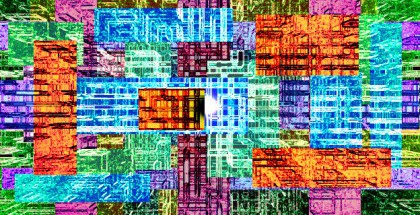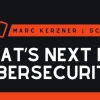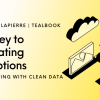Cloud has been both an exciting and disruptive force in the technology market for the last decade. It has acted as a critical enabler for a host of other influential technologies and this will continue and accelerate in 2017.
Compliance – complexity and uncertainty drives the need for flexible, adaptive strategies
In 2016 we have seen various geo-political changes impact the legislative landscape – including Brexit and its potential fragmentary impact on consolidated European data protection policy; citizens became more aware of the potential value of their personal data which resulted in legal challenges to the aged Safe Harbor agreement and introduction of Privacy Shield; and the announcement of EU GDRP which potentially helps better protect EU citizens, but also creates challenges for all organisations that store and process data.
The high-profile repercussions of these events will play out through 2017 and beyond, meaning that everyone - including consumers, businesses and governments – will become very tuned into the question of where their personal data is being stored, how it is being used and protected; and how it may be moved between countries. This has resulted in a very complicated picture for any organisation that wants to operate across multiple geographies; or store and move data between them. In turn these organisations need flexible strategies that can adapt to the changing political and legislative environment.
Multi-cloud and hybrid IT environment approaches that allow for the storage of sensitive data in discrete infrastructures and geographies offer a potential solution here. The ability to deploy quickly without the need to make capex-intensive, fixed-term bets on future conditions, offers a chance to deliver against the needs of today, whilst keeping the options for tomorrow open.
Security – both the threats and solutions will be born in the cloud
High-profile, large-scale hacks and cyber-attacks have been all over the media this year. While on one hand, cloud has enabled types of large-scale attack, the solution to these threats also lies in the cloud. Some of the biggest names on the technology scene are making big moves in artificial intelligence (AI) – which will be a significant factor in making the cloud more secure. As AI grows, the cloud will enable automated scanning on a mass scale, combined with ever more intelligent threat detection, analysis and response.
Developments on Software Defined Networking and hyper-converged platforms will enable more granular protection of assets; technologies like Micro-Segmentation offer the ability to extend security policies at the workload level.
The automation that AI and infrastructure transformation drive will also play an important role in removing the risk of human intervention in the security chain.
Hyper-scale clouds will need to be managed and multi-clouds will need consolidating
As factors like security, compliance and the need for resilience drive the need for multiple cloud environments, organisations will be looking to consolidate the management of these diverse platforms. But cloud deployments can be complicated and skills in these areas can be expensive and hard to find; this means organisations will increasingly look to partners to deploy and manage these environments for them. As a result of this growing demand for multi-cloud, we’re also likely to see more partnerships, mergers and general consolidation of the cloud and service provider market.
We’ll welcome SDN to the mainstream
Labelled as the next big thing in networking for several years now, 2017 may well be the year SDN will finally enter the mainstream of enterprise IT. As all the big telco industry players invest large sums in network transformation, the cost of deployment is decreasing, so SDN and its integration with cloud infrastructure will become a common part of most enterprise deployments.
Hyper-convergence is real, but skills in this area are scarce
Hyper-converged infrastructure offers organisations the ability to allow software to integrate compute, storage and networking functionality on uniform, commodity hardware platforms. The very real cost savings and performance increases that this approach can deliver will drive demand in 2017. However as with cloud, skills in this new technology area can be hard to find and therefore expensive to hire. This means that there will be a growing market for skilled partners to deploy and manage these environments on behalf of clients.









